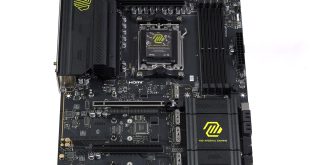One area in which Asus hasn't compromised is the UEFI interface which is shared among all the motherboards in their range.
After pressing the DEL key to enter the UEFI interface, we are greeted by the basic screen which provides a number of configurable options for users who might be daunted by an advanced BIOS interface.
Clicking the ‘Advanced Mode' button brings up our preferred interface. We are first greeted by the main page which gives us some basic BIOS information. We updated the BIOS to the latest version before testing the motherboard.
All of the overclocking options are located under the ‘AI Tweaker' tab. Asus has included all the options we could possibly ask for even though this board isn't specifically designed for overclocking.
Under the ‘Advanced' tab we find a number of further pages which contain the non-overclocking BIOS settings.
We are able to set up different fan profiles for the headers on the board under the ‘Monitor' tab which also displays various temperature and voltage readouts.
The final two tabs let us change the boot configuration, set up different overclocking profiles and update the BIOS version using an extremely simple utility.
Overclocking with the P8Z77-V LX is very simple thanks to the well laid out UEFI interface. That said, we were slightly disappointed that this motherboard doesn't have an automatic overclocking feature in the BIOS which is very useful for those without the technical know-how to overclock manually. A perfect audience for a budget motherboard such as this.
We managed to achieve an overclock of 4.7 GHz using a baseclock of 100 MHz, a multiplier of 4.7x and a core voltage of 1.30V. We didn't feel comfortable trying to push the voltage further than this because of the lack of cooling on the power regulation circuitry.
See validation here.
 KitGuru KitGuru.net – Tech News | Hardware News | Hardware Reviews | IOS | Mobile | Gaming | Graphics Cards
KitGuru KitGuru.net – Tech News | Hardware News | Hardware Reviews | IOS | Mobile | Gaming | Graphics Cards



















that gigabyte board is hard to beat on price. they can’t be making more than £10 from each sale.
Great looking board for the price, but I still cant believe the gigabyte price point.
Not bad, but id like two 16x slots for futureproofing.
I have bought two of these boards this week, as part of bundles from my local component shop in Coventry, and I have to say they are very solid. yeah I get what your saying about the lack of 2 x 16 Crossfire, but as I will never use it, the board is solid. Currently running mine with a 3570k and an NH-D14 at 4.5Ghz. Easy to set up as long as the 1st thing you do is update the Bios.